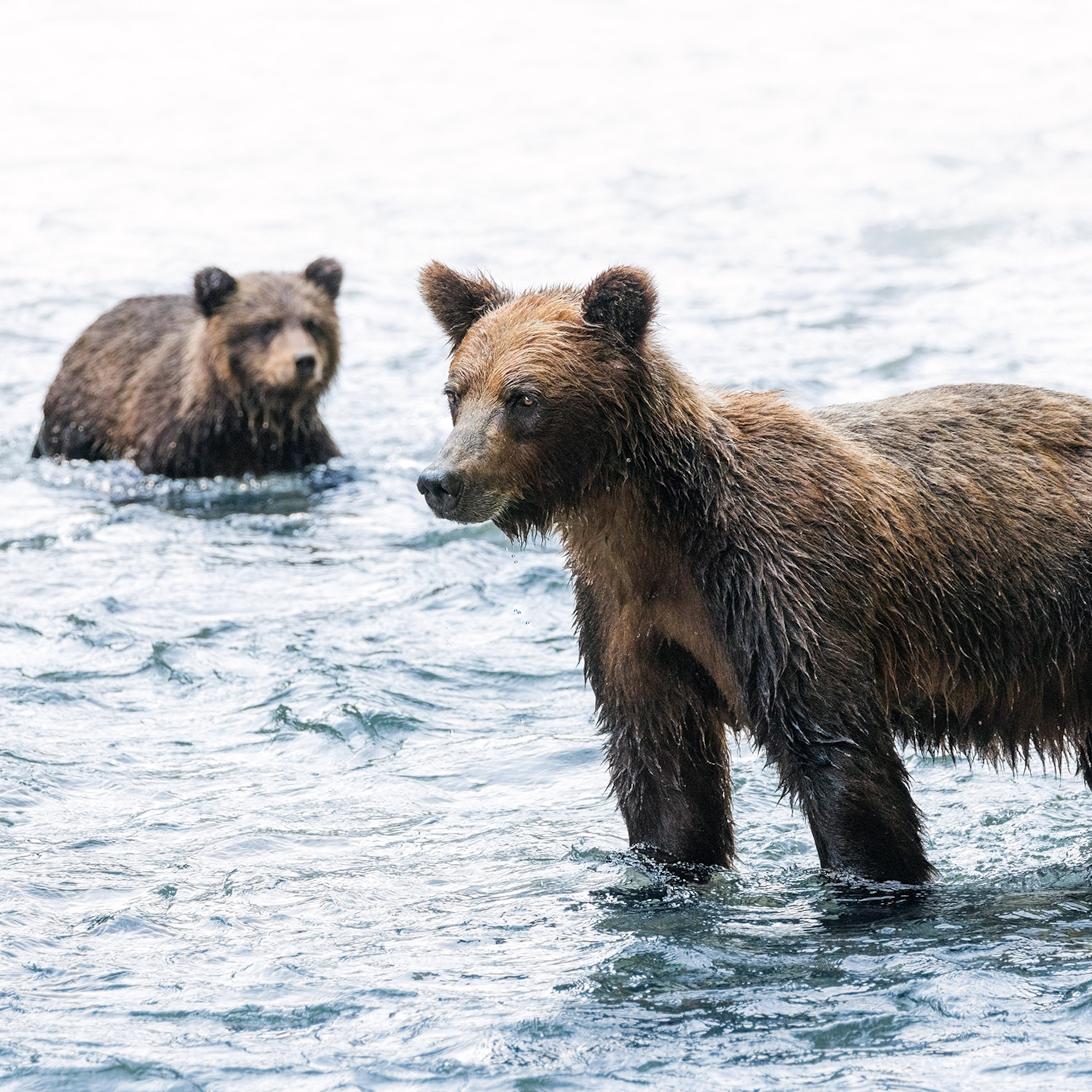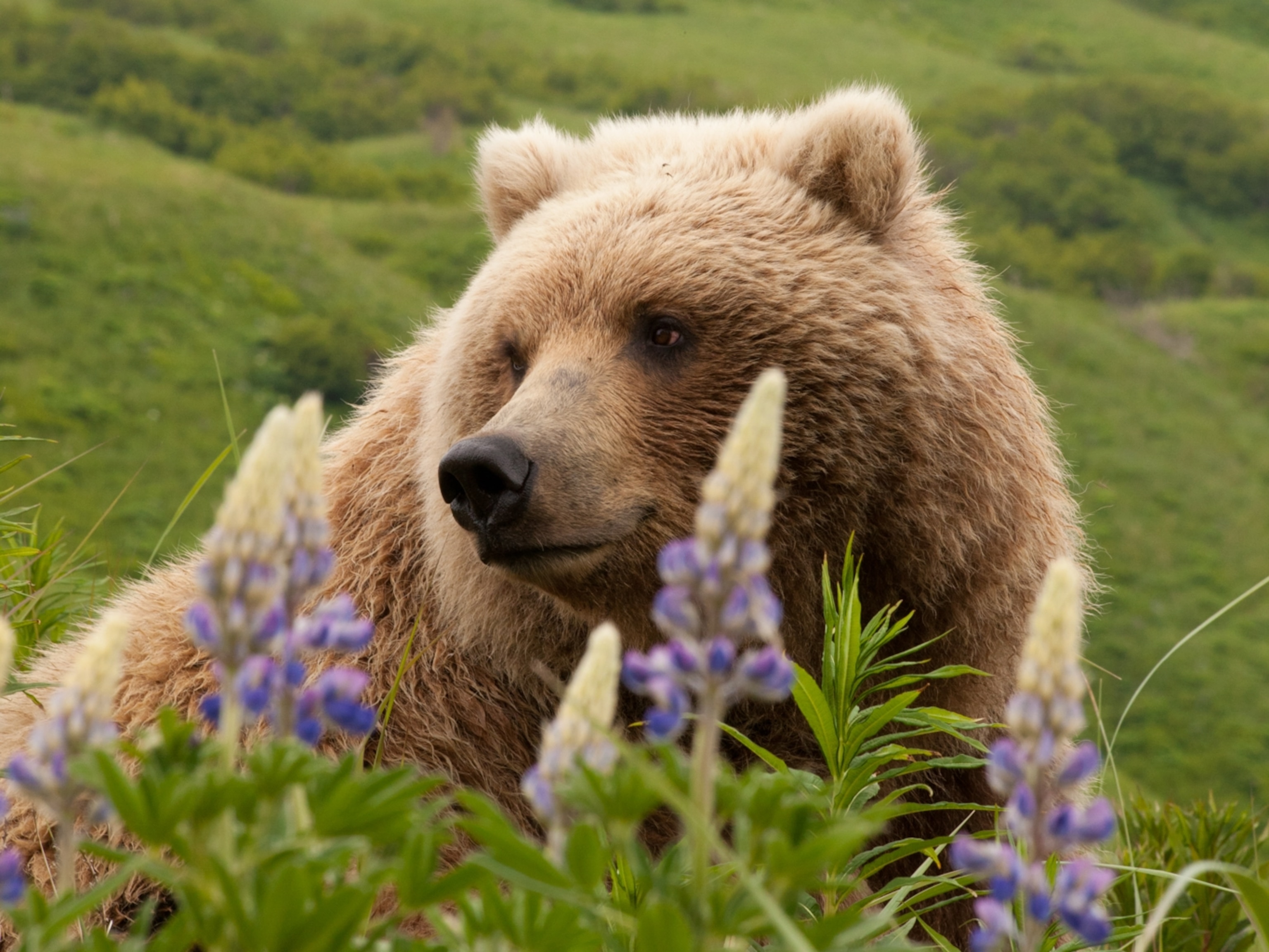
Mountain Biker Killed by Bear in Montana
With bear populations rising, are more fatalities inevitable?
When Brad Treat and a companion headed out for a mountain bike ride on a popular trail across the road from Treat’s home near West Glacier, Montana, on June 29, they expected a fun afternoon in the woods. The day was hot and sun-soaked. Maybe afterward they’d jump in the cool waters of the nearby Middle Fork of the Flathead River, which forms the border of Glacier National Park. Their trail curled and twisted through a deep forest of pine and aspen, concealing what lay around each bend.
With Treat leading the way around 3 p.m., they came face-to-face with what every mountain biker in the region fears—a bear at close range. The bruin instantly attacked, knocking Treat off his bike and to the ground. His companion fled in terror to notify emergency responders. When they arrived back on the scene an hour later they found Treat’s lifeless body. The bear was gone.
(Maulings by Bears: What's Behind the Recent Attacks?)
Mountain bikers and other backcountry recreationists in Montana accept a certain level of wildlife-induced risk. We have grizzly bears, mountain lions, and wolves in abundance, which is a major reason many of us are here. Montana is wild and that’s just the way we like it. But with that wildness comes the chance of accidentally aggravating a creature more physically powerful than we are—and the risk is increasing.
As of this writing, the bear’s species is unknown, but the rescue helicopter that found Treat’s body saw a grizzly bear in a marsh nearby. Though black bears can attack humans, grizzlies are more likely to be aggressive when surprised. “[The attack] is more consistent with grizzly bear behavior than black bear,” said Stephen Herrero, a leading expert on bear attacks and author of the classic book Bear Attacks: Their Causes and Avoidance.
The Wildlife Human Attack Response Team from Montana Fish, Wildlife, and Parks gathered DNA from the scene and have been searching for the bear. Two culvert traps and remote cameras have been placed near the scene. Bear-spotting helicopter flights are ongoing.
In a statement, Montana FWP warden captain Lee Anderson said, “We are attempting to capture and/or confirm the identity of the offending bear. When we have more information we will decide what actions to take.”
If the bear is captured, which is less likely with each passing day, state biologists will determine its fate. When bears display predatory behavior, or if they consume a human, they are put down. But Montana FWP spokesman Ron Aasheim told the Associated Press, “I don’t think there’s any sense that this was predatory.”
The 38-year-old Treat was a former ranger in Glacier National Park and had worked as a law enforcement officer for neighboring Flathead National Forest, the same forest where he was killed, for 12 years. A native of the nearby town of Kalispell, where he starred on the cross-country and track teams in high school, Treat married a local woman who shared his love of the outdoors. Described as a “mountain man” by friends, part of his job was arresting poachers and protecting the very bear that took his life.
Flathead National Forest spokeswoman Janette Tusk describes the community of Forest Service employees as tight-knit and said, “They are traumatized and affected by this, grieving the loss of a comrade.”
“It’s hit [the community] very hard,” said Denny Gignoux, owner of Glacier Guides and Montana Raft Co., which is located near Treat’s home. “Everyone is trying their hardest to figure this thing out.”
The “Green Gate” trail system where the incident occurred is popular with locals. “It’s an area that people go to walk their dogs and unwind because it’s so accessible,” said Gignoux, who added that a group of equestrians encountered an aggressive bear on the trails earlier the same day, but it’s unknown if it’s the same animal.
“There are people that are parked there almost all the time,” Gignoux said. “It’s the local park. One of our guides had just run in there two days ago and was saying 'It could have been me.’”
Glacier National Park and the surrounding region are known as the Crown of the Continent, a 10-million acre sprawl of glacially carved mountains and cold, crystalline rivers. Thanks to its unusually intact ecosystems and protections afforded by the Endangered Species Act (grizzlies have been listed as threatened since 1975), the Crown grizzly population has been growing steadily. Biologists estimate it now contains a thousand grizzlies, the largest population in the Lower 48. As in the Greater Yellowstone Ecosystem to the south, which harbors an estimated 700 grizzlies, conflicts with humans are inevitable. Mountain bikers may be particularly prone to conflict.
“Mountain bikes are potentially very dangerous,” said Herrero, who admits to enjoying bike rides in the woods himself. “They approach quietly and fast. Bears don’t like surprises and the odd one responds very aggressively.”
His advice to anyone recreating in bear country is simple—“Always carry bear spray and make noise.”
Herrero has modified his water-bottle cage to carry a canister of bear spray. “It’s right there and you can get it deployed in two or three seconds,” he said. Quick access is critical because, “When a bear comes at you they can get to 30 miles per hour in a short time.” (Counter Assault, a bear-spray manufacturer in Kalispell, sells a spray case designed to mount in water-bottle cages.)
- National Geographic Expeditions
Though many people use “bear bells” when hiking and biking, Herrero and other biologists don’t believe they’re loud enough to be effective. Instead, Herrero recommends riding in groups, because, “they make more noise and let bears know you’re coming.”
He’s quick to add, “If you’re biking in grizzly bear country, there is a hazard. You need to up the caution and slow it down. Everybody wins if you act intelligently and do everything possible to avoid attack. Otherwise it’s not fair to the bears.”
As grizzly populations continue to expand in the years ahead, all outdoor-loving people in their growing territory will need to be vigilant, for our sake and the bears'. Some people say we should shoot grizzlies on sight. Others say we should never even enter their habitat. Both groups are misguided. Bears and humans can coexist, as we have for millennia, if we’re careful and smart.
My grandfather is from the Glacier National Park area, and I moved here 18 years ago after a spell in Colorado because the mountains there felt somehow empty and enervated without grizzlies. Seeing them, or even just their tracks or scat, adds an electric charge to any outdoor adventure.
It’s important to remember that even in an ecosystem as thick with bears as the Crown of the Continent, grizzly attacks are rare. The last fatal encounter in the region occurred in 2001.
“I don’t know of anyone else that’s even been injured on a mountain bike from grizzlies,” said Gignoux. “But I know people that have died from driving accidents, skiing accidents, and road biking accidents.”







